The Law Office of Nikolaus W. Reed can help you through the claims process when you’re hurt in an accident in San Pablo. While the conditions in San Pablo are nearly ideal for riding your bicycle, accidents still happen. And when they do, you’re the one that’s likely to face the brunt of the damage. My firm can help you understand your options and what to do next. Set up a free consultation today to get started.
Should You Call a Lawyer?
Riding your bike in San Pablo is meant to be a pleasant experience, but that all changes when you’re in an accident. You don’t technically need a lawyer to file a claim after a bike accident, but having one can make things much easier on you. My firm can help you by:
- Providing clear explanations of your options and rights.
- Looking into how the accident happened and who’s responsible.
- Gathering important evidence, like photos, witness accounts, or surveillance footage.
- Dealing with insurance adjusters so you don’t have to.
- Filing a lawsuit, if that’s what it takes.
Trying to manage all of this while you’re hurt is a lot. That’s why we’re here—to take the pressure off and help you get the support you need. No matter where or how your bike accident happened, we’re ready to help you understand what comes next. And a good starting point for that is looking at the legal framework in place.
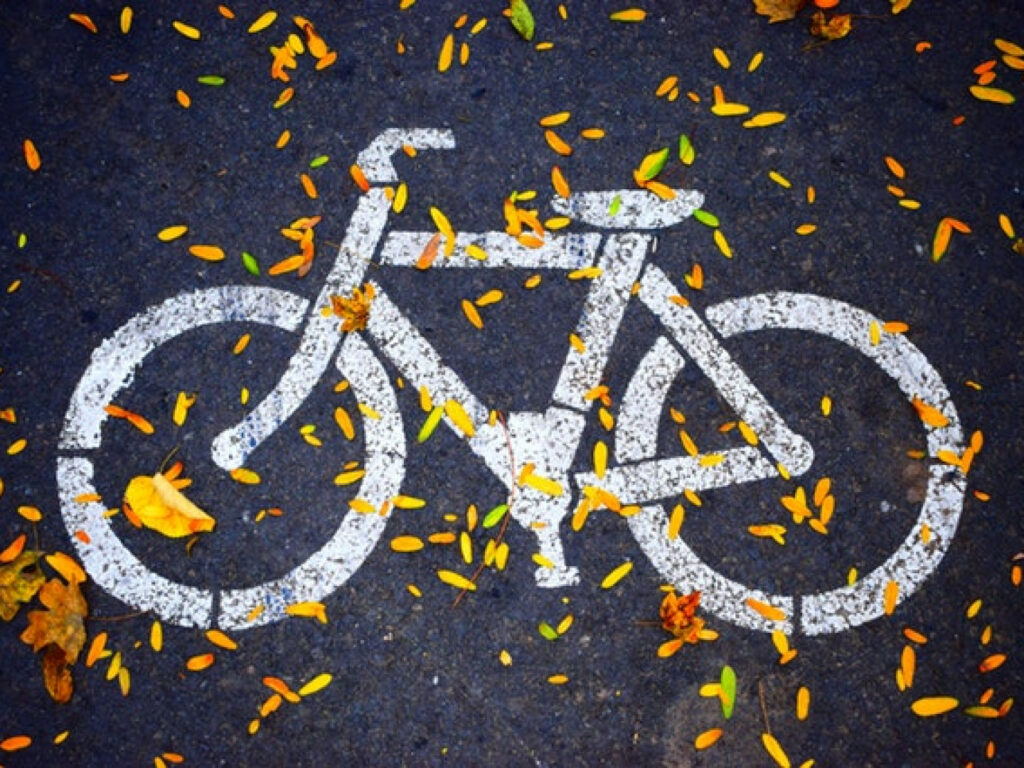
What Are the Laws For Biking in San Pablo?
If you ride a bike in San Pablo, it helps to know both the local rules and the state laws that apply to you. The San Pablo Municipal Code, along with the California Vehicle Code, lays out what you can and can’t do on a bike—both for your protection and to help drivers. San Pablo follows California’s bike and traffic laws, but the city also adds its own spin—especially in places like parks, sidewalks, or school zones:
- No riding on sidewalks where posted – San Pablo can restrict riding on sidewalks in commercial or high-foot-traffic areas under Municipal Code §10.04.010, though specific signage must be posted.
- Yield to pedestrians in shared areas – If you’re biking through parks or multi-use trails, always slow down and give space to people on foot.
- Obey all posted traffic signs and signals – Intersections like San Pablo Avenue & Rumrill Boulevard are hotspots for bike/vehicle interactions. Riders must follow stop signs and lights just like drivers.
State Laws
Like every other city in California, San Pablo uses state laws as the template for its ordinances as they relate to riding a bike in the city. Generally speaking, though, the California Vehicle Code is going to take precedent. Here’s how state law applies to riding a bike:
- CVC §21202 – Stay as far to the right as practical, unless you’re passing, turning left, or avoiding obstacles.
- CVC §21208 – Use bike lanes when available and you’re riding slower than traffic—unless you’re turning or passing.
- CVC §21650 – Ride in the same direction as traffic, on the right side of the road.
- CVC §21211 – Don’t stop or park in a bike lane or path unless it’s an emergency.
- CVC §21201 – Your bike must have:
- A white front light for night riding
- A red rear reflector
- White or yellow side and pedal reflectors
- Working brakes
- Handlebars below shoulder height
- A fixed seat, and be the right size to safely stop and support yourself
- CVC §21200.5 – Riding under the influence of alcohol or drugs is illegal.
- CVC §21212 – Riders under 18 must wear a helmet (failure can result in a fine up to $25).
- CVC §27400 – Don’t wear earplugs or headphones in both ears unless they’re hearing aids.
- CVC §21205 – Keep at least one hand on the handlebars at all times.
- CVC §21204 – No passengers unless they have their own seat or a child safety seat.
- CVC §21207.5 – E-bikes are generally allowed in bike lanes unless signs say otherwise. Gas-powered bikes are not.
- CVC §23330 – Bicycles aren’t allowed on toll bridges (like the Richmond–San Rafael Bridge) unless signs specifically permit them.
Even when you follow the law, accidents can still happen—especially at busy intersections or in areas without protected bike lanes. The more you know about when and where to ride your bike in San Pablo, the better your chances are at avoiding an accident.
Where Will I Find San Pablo’s Bicycle Lanes?
If you spend any amount of time on your bike in San Pablo, you’re probably pretty aware of the different lanes and other measures the city has put in place to protect you. Keeping in line with Caltrans guidelines, San Pablo uses different kinds of bike lanes throughout the city:
Class I – Shared Use Paths – These are off-street paths where bikes and pedestrians share the space. They’re separate from car traffic, which makes them a safer option for many riders. An example of a Class I Shared Use Path in San Pablo is the Wildcat Creek Trail pictured below.
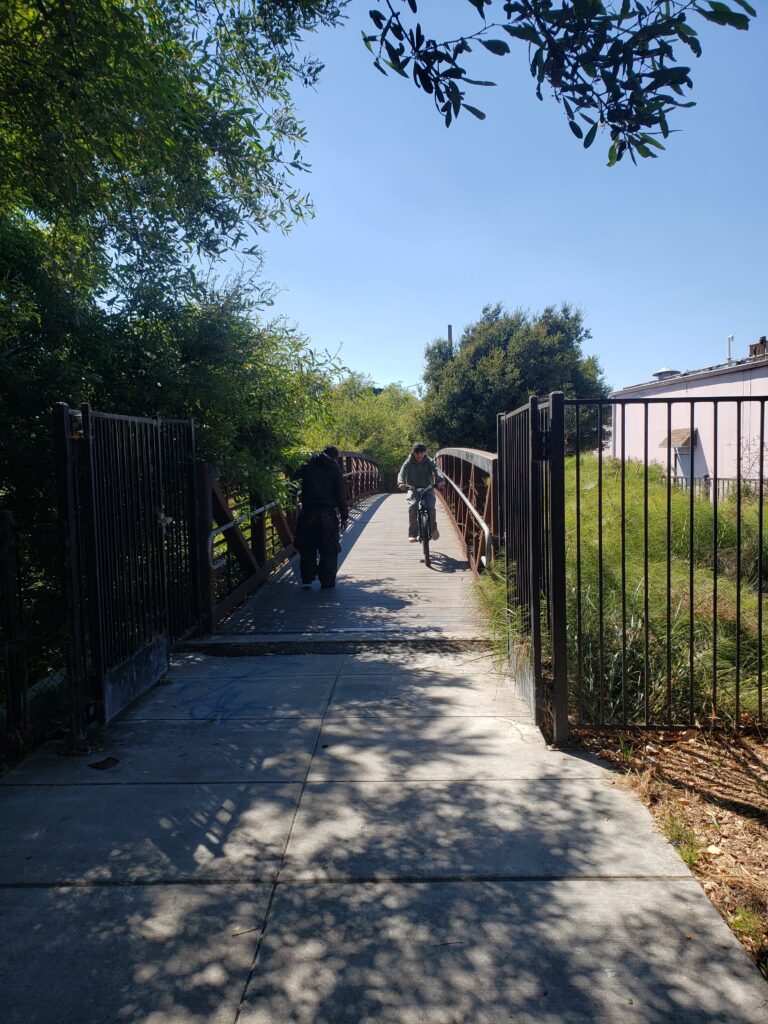
Class II – Bike Lanes – These are striped bike lanes painted directly on the road, with signage marking them for bicycle use only. You’ll see Class II lanes on main roads like San Pablo Avenue and Church Ln, which is pictured below. Class II lanes are usually in areas that have been updated with more bike-friendly infrastructure.
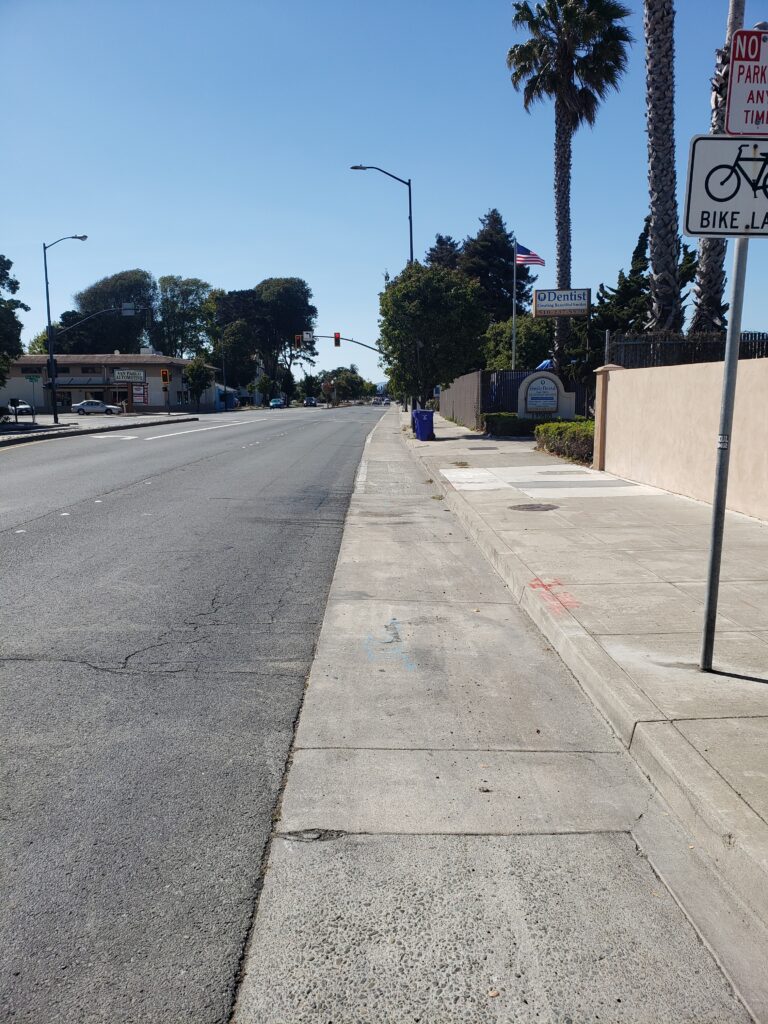
Class III – Bike Routes – Class III routes are shared streets—meaning bikes and cars use the same lane. These routes are marked with painted symbols (called “sharrows”) and street signs that show it’s a designated bike route. A Class III Bike Route at Broadway Ave to 21st Street is pictured below
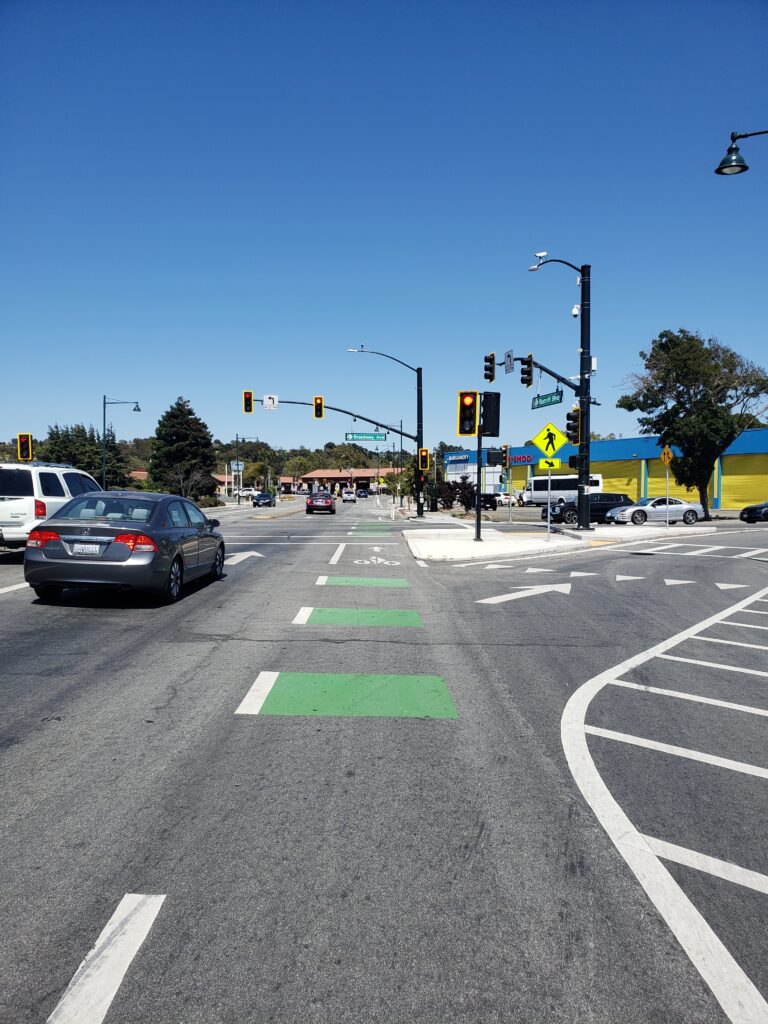
Class IV – Protected Bike Lanes – Class IV lanes include a physical barrier—like a curb or bollards—between bikes and car traffic. The city’s main Class IV Protected Bike Lane is along Rumrill Boulevard, seen here at Road 20.
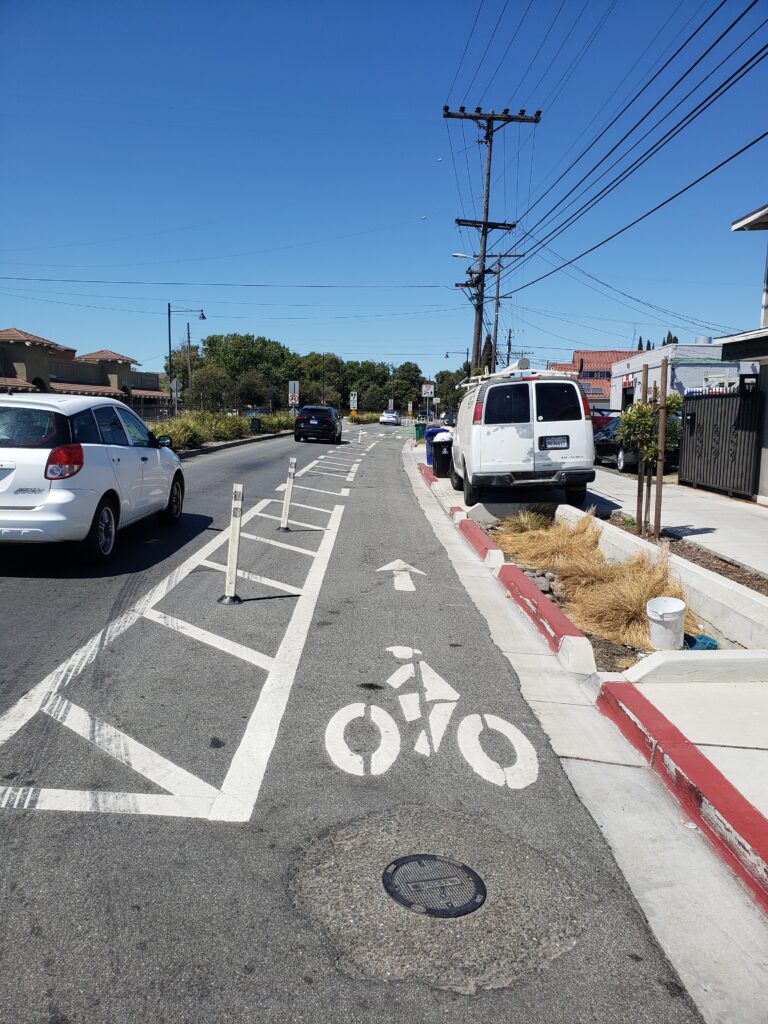
For more details, you can check out this official bike route map provided by the city.
What Other Ways Does San Pablo Protect Bicycle Riders?
Like a lot of other cities in California, San Pablo doesn’t just rely on having bike lanes and a legal framework to help riders. Since 2017, the city has implemented its Bicycle and Pedestrian Master Plan as a way to make streets safer and more usable for people on bikes and on foot by:
- Spotting problem areas – The plan lays out where crashes involving cyclists and pedestrians have happened most often—especially on busy roads like San Pablo Avenue and Rumrill Boulevard. By identifying these hotspots, the city can focus upgrades where they’re needed most.
- Laying out new bike route ideas – Early on, the plan called for a citywide network of Class I, II, III, and IV bike routes. That means everything from protected lanes to shared streets, helping connect neighborhoods with schools, shopping areas, and transit stops. Some pieces—like the Class IV Protected Bike Lane on Rumrill Boulevard and Road 20—were already in place as of April 2025.
- Fixing unsafe intersections – Intersections near Contra Costa College and along San Pablo Avenue are called out as especially risky. The plan pushes for fixes like brighter lighting, curb extensions, and traffic-calming tools to make crossings safer—especially for people on bikes or anyone turning through busy intersections.
- Making transit easier to reach by bike – One of the big goals is to make it easier to bike to and from bus stops, AC Transit routes, or nearby BART stations. That includes things like secure bike racks, lockers, and clearly marked pathways so riders and pedestrians can get around more easily.
- Getting more funding – Having a clear plan helps San Pablo compete for transportation grants at the state and regional level—funding that’s often needed for major safety projects. Without this roadmap, it’s a lot harder to bring those dollars in.
The Plan is helping make San Pablo safer for people on bikes—but no system is perfect. Even if you’re following the rules and riding carefully, you can’t control what drivers or others around you do. Accidents still happen, and when they do, it’s important to know what you’ll need in terms of information.
What Information Will I Need For a Bicycle Accident Claim?
A bike accident can happen to you when you least expect–or afford–it in San Pablo. But one thing is universal: you’re going to need information. The details you’re able to get in the hours and days after the accident itself can make a big difference if you decide to file an injury claim. Here’s what you should focus on:
- Driver and vehicle information – First and foremost, you’re going to want to get the contact and insurance information of the driver that caused the accident (and anyone else involved.) If they leave the scene, try to remember everything you can about the vehicle.
- Witness details – If anyone saw the collision, get their name and contact information. Make a brief note about what they saw, and if they’re willing to share. Witnesses often leave quickly—try to speak to them while still at the scene if possible.
- Pictures and videos – Visual evidence is huge. Use your phone to take pictures of your bike and any visible damage, vehicle(s) involved, injuries, skid marks, traffic signals, or road hazards, and any nearby businesses or homes that might have cameras. This kind of visual evidence can help show what really happened—especially if there’s a disagreement later.
- The accident report – Calling 911 is a very important step for getting help. After you ask for an ambulance, ask the dispatcher to send the police. Either the San Pablo Police Department or California Highway Patrol (CHP) should respond to the scene and start gathering information and putting together a report, which you can request a copy of later. This report is often a key piece of your claim.
- Medical records – Even if you think you’re okay, get checked out at a hospital or urgent care. Keep copies of ER or urgent care intake notes, test results and X-rays, doctor’s recommendations or follow-up instructions, and any bills or receipts tied to your treatment.
- Notes about what happened – As soon as you can, jot down everything you remember, especially where and when the accident happened, what direction you were riding, what the weather and traffic were like, and anything the driver or witnesses said.
Memory fades fast after an accident—writing it down while it’s fresh helps protect your side of the story. If you’re injured and trying to handle this all at once, it can feel like a lot. Our team helps you piece together the full picture—so you can focus on getting better, not chasing paperwork.
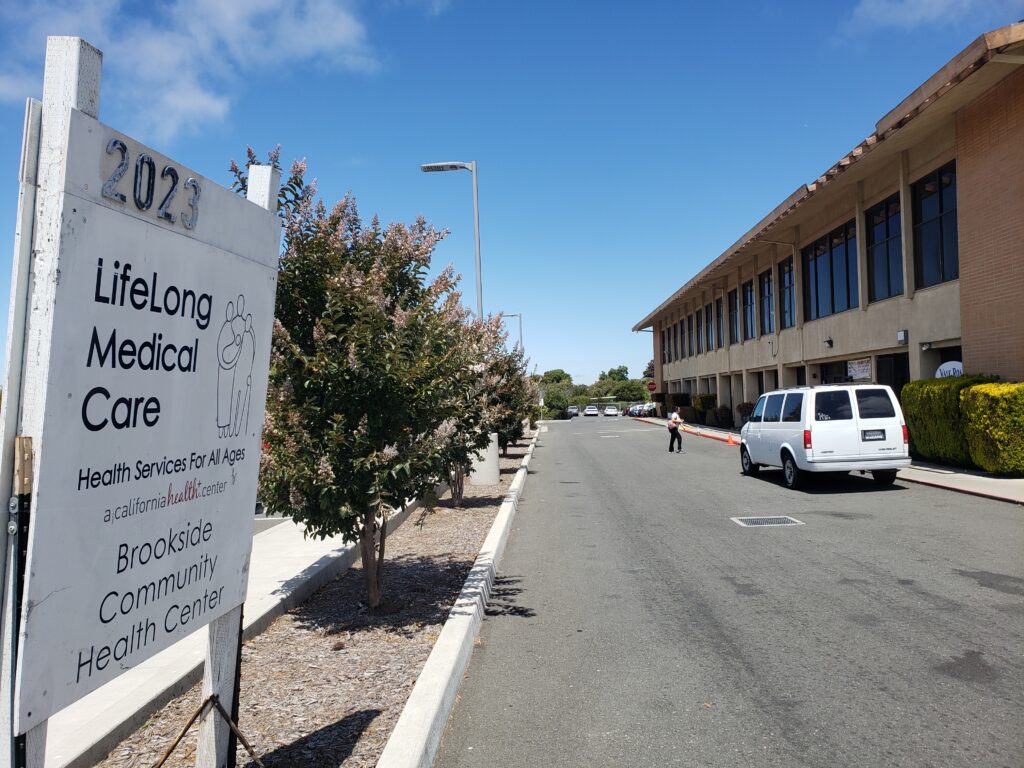
Frequently Asked Questions
How much is my bike accident claim worth?
This varies from claim to claim, but generally, it’s going to depend on how hurt you are, who’s at-fault, and how well you show your losses. Our team can make sure you have everything you need for a strong claim.
Can I file a claim If I’m hit outside of a bike lane?
Yes, usually. As long as your accident happened because of someone else’s negligence, you can file a claim and recover damages––even if you weren’t in a bike lane at the time.
Is there a deadline for filing a claim after a bike accident?
Yes. You have two years from the date of the accident to file. If you miss this deadline, you can’t file a claim at all.
Guidance and Support After a San Pablo Bicycle Accident
In San Pablo, bicycle accidents are always unfortunate, regardless of the cause. Riding should be an enjoyable experience, especially in such a beautiful place. However, it’s important to remember the inherent risks of riding your bicycle in the city, many of which are beyond your control.
At the Law Office of Nikolaus W. Reed, we understand what you’re going through and will be there with guidance and support after a bicycle accident. Reach out today to set up your free, no-obligation consultation.
